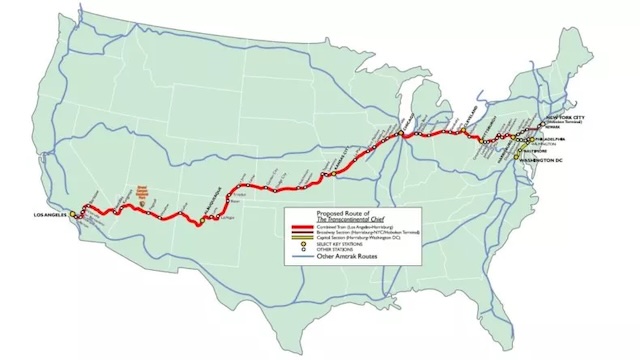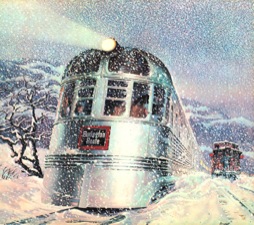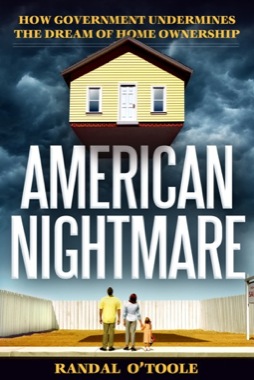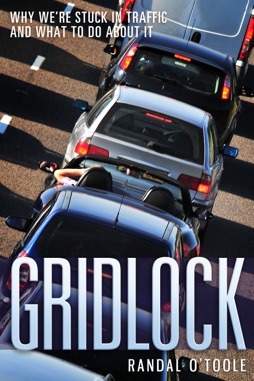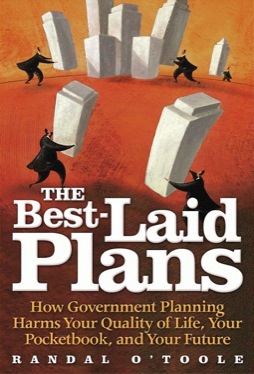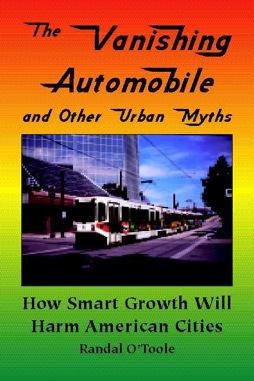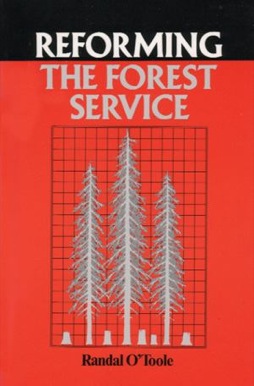According to Newsweek, some nutty group called AmeriStarRail is proposing to run high-speed trains from New York to Los Angles, which it says can be done at a profit. Only they wouldn’t be high-speed trains and they almost certainly wouldn’t earn a profit.
The AmeriStarRail proposal is to run a train from New York to Los Angeles on existing tracks. The train would take 72 hours for an average speed of 45 miles per hour, which is hardly a high speed. The train would replace, not supplement, existing trains on the proposed route: the New York-Pittsburgh Pennsylvanian, the Pittsburgh-Chicago portion of the Floridian, and the Chicago-Los Angeles Southwest Chief. Continue reading

